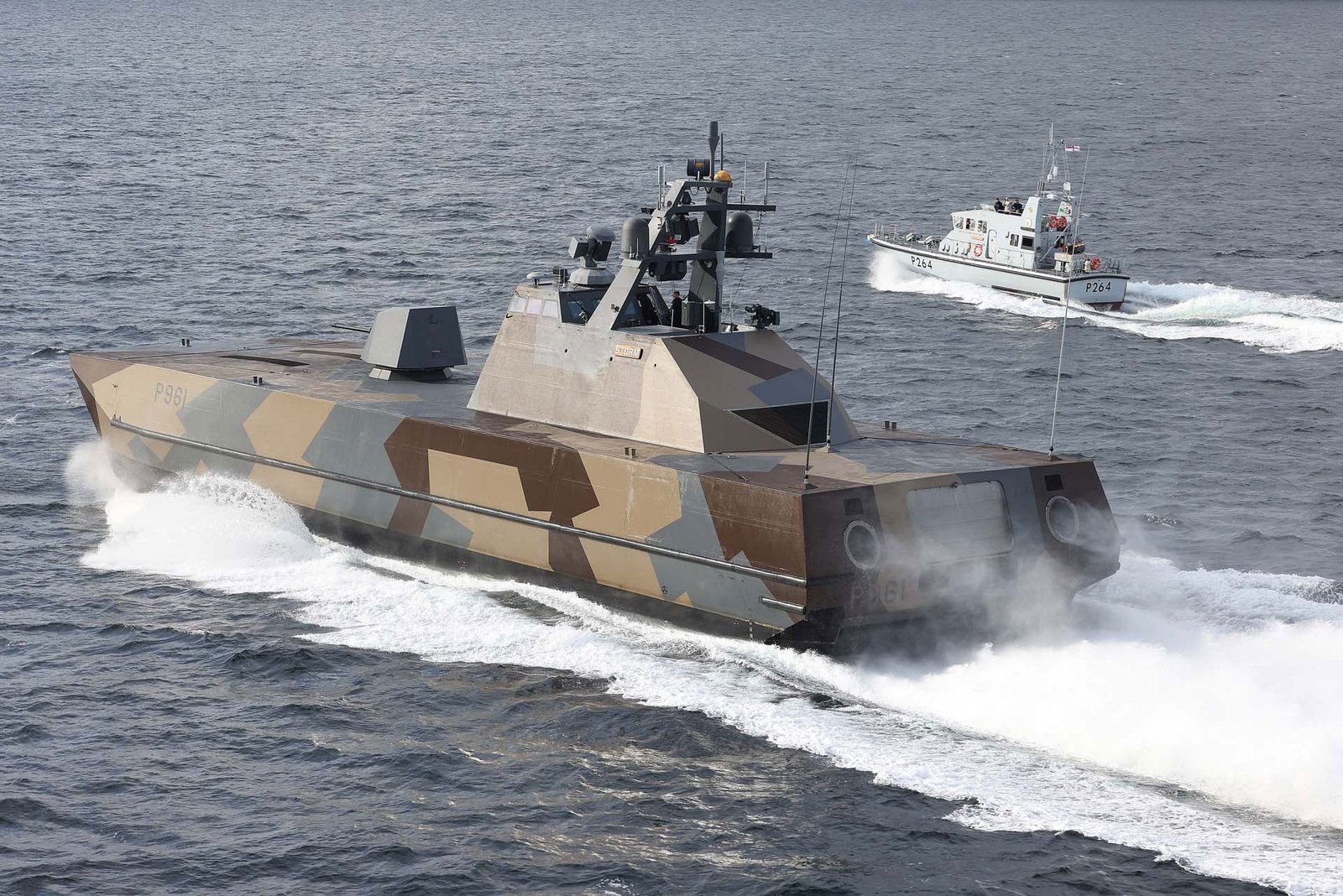Royal Navy fliers honed their skills with their newest weapon systems as they joined the Norwegians in a hunt in the fjords.
Wildcat helicopters joined battle with stealthy Norwegian missile craft and fast moving Royal Navy patrol boats in a fortnight-long workout designed to get the most out of two new missile systems.
Exercise Tamber Shield – staged under the auspices of the UK-led Joint Expeditionary Force, a partnership of northern European nations committed to regional security – saw the Royal Navy and their Norwegian hosts converge on the confined waters around Bergen.
There they used the helicopters and boats to develop the tactics which will fend off fast attack craft threatening individual ships or task groups in future.
Four Wildcat helicopters from 815 Naval Air Squadron, based at RNAS Yeovilton in Somerset, were dispatched with 90 air and ground personnel to Haakonsvern naval base, southwest of Bergen.
From there, they took on ‘red (enemy) forces’ – in this case, played by Norwegian Skjold-class patrol boats and HMS Archer and Pursuer, two small, fast Royal Navy P2000 patrol vessels, for the purpose of the exercise.
Both are fast and highly-maneuverable making them the ideal ‘enemies’, particularly when coupled with the rugged and mountainous terrain of the coastline – an ideal hiding place for such fast attack craft.
The aim of the exercise was to test and refine tactics of the potent new Martlet and heavier, longer-range Sea Venom missiles, enhancing the firepower delivered by the maritime strike squadron in an unfamiliar and challenging arena.
Operating in the Norwegians’ ‘backyard’ enabled the Wildcat fliers to learn from their hosts, who know these waters intimately, helping to develop an understanding of everything from how crews communicate most effectively in that environment to the tactics employed and ultimately, how to integrate seamlessly with each other.
Clocking up over 200 flying hours – more than eight whole days airborne – crews were put through their paces through immersive and realistic training, significantly developing the Wildcat’s availability to hunt down, and ‘kill’, fast patrol boats hiding in the jagged coastline.
“Undertaking high end warfighting exercises with JEF partners not only improves our operational capability, it also allows us to exploit each other’s strengths,” said Lieutenant Commander Sammy Haynes, Senior Observer of 815 Naval Air Squadron and Detachment Commander for the exercise.
“This exchange of skills, information, and local knowledge has allowed all parties involved to further develop tactics and procedures; far improving their effectiveness in this different, exciting and challenging environment.”
Among the more interesting tactics practiced was the Wildcats acting as scouts for the Norwegian corvettes – providing crucial targeting information for the Skjold, while the fast boat itself remained undetected by the enemy.
Commodore Trond Gimmingsrud, Chief of the Norwegian Naval Fleet, joined a Wildcat for one sortie to experience the exercise first-hand and believes both navies have benefited hugely from the experience.
“During Exercise Tamber Shield, we have been able to improve our ability to work together as well as strengthening the relations with a key ally,” he said.
“I believe the exercise has also strengthened the Royal Navy’s ability to operate inshore and in waters around the UK. These are all key factors in making the Joint Expeditionary Force a responsive force which contributes to Northern European stability.
“I had the great pleasure of flying with 815 Squadron in one of the tactical exercises. The highly-qualified crew in a very capable helicopter provides opposition at a level we rarely experience. The frequent and frank exchange of lessons identified, and development of new tactical ideas contributed greatly to our outcome.”

